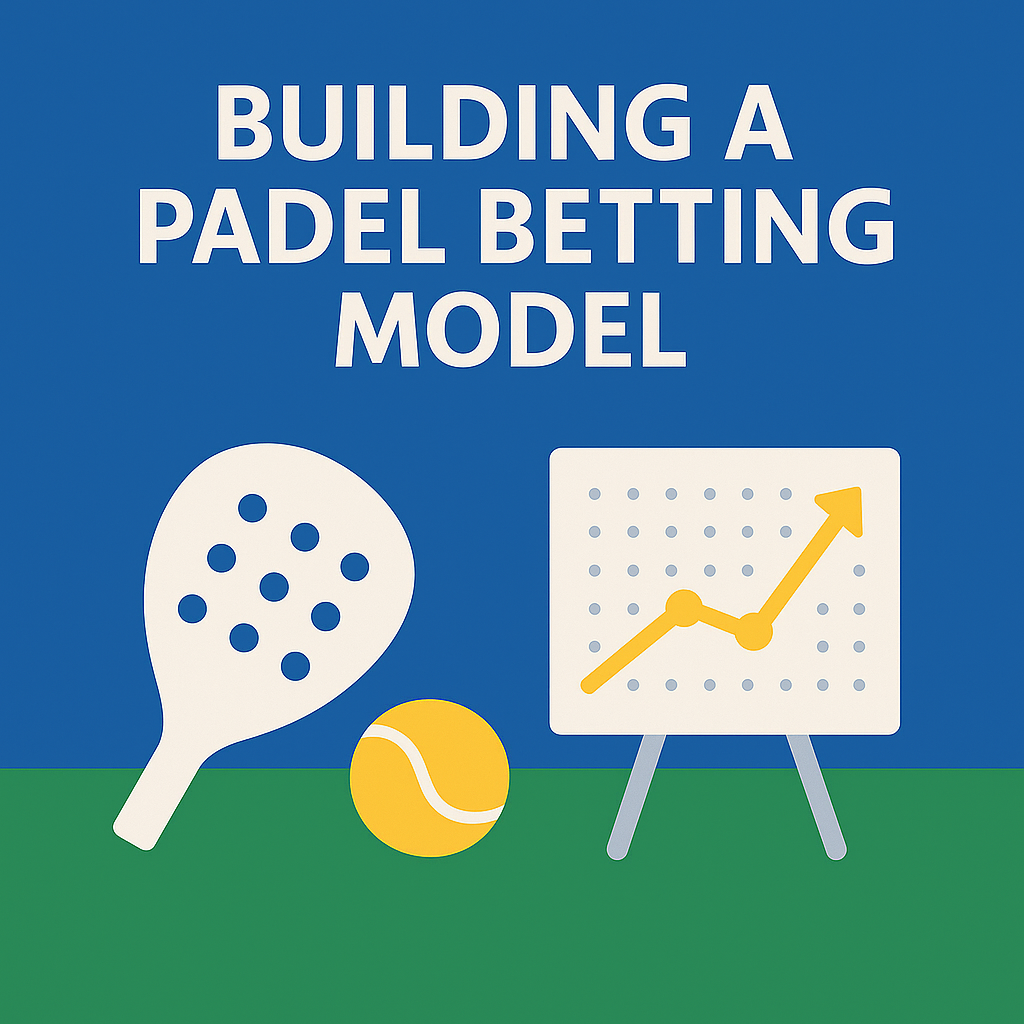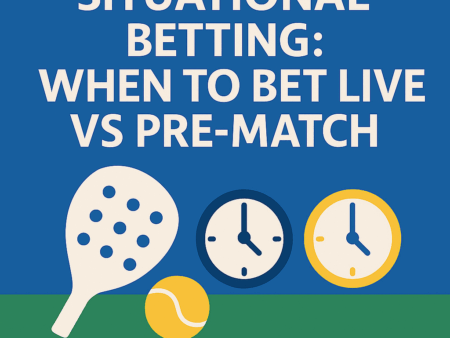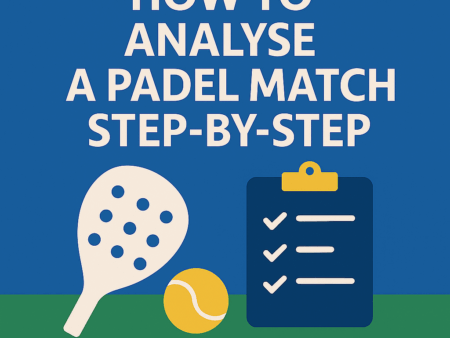
A betting model is the most reliable way to make consistent, data-driven predictions in padel. Instead of guessing outcomes or relying on intuition, a model helps quantify the true probability of each result — letting you instantly identify value.
This guide walks you through a simple, beginner-friendly approach to building your first padel betting model.
🟦 What Is a Betting Model?
A betting model is a structured system that:
✔ assigns probabilities to outcomes
✔ compares them to bookmaker odds
✔ identifies value bets automatically
Your goal is NOT to be perfect — your goal is to be more accurate than the market in specific situations.
🟩 Step 1 — Collect the Right Data (Only What Matters)
Padel doesn’t require huge datasets. You only need high-impact statistics.
Core Data Inputs:
- Recent form (last 10 matches)
- Golden Point performance
- Net points won %
- Long rally success %
- Break-point conversion & saves
- Unforced error rate
- Indoor vs outdoor performance
- Court speed suitability
- Weather impact (outdoors)
- Partnership chemistry score
You can track these in a simple spreadsheet.
🟨 Step 2 — Standardise Each Metric (Score 1–10)
To combine metrics from different sources, convert everything into a 1–10 scale.
Example:
- Golden Point win rate 60% → score = 8
- Break-point save % 40% → score = 4
This makes comparisons easy.
🟥 Step 3 — Weight Each Variable by Importance
Not all stats matter equally.
Here is a recommended weighting system:
| Metric | Weight |
|---|---|
| Form (last 10) | 25% |
| Golden Points | 20% |
| Net % won | 15% |
| Long rallies | 10% |
| Break-points | 10% |
| Court speed suitability | 10% |
| Weather suitability | 5% |
| Chemistry score | 5% |
This produces a composite rating for each team.
🟦 Step 4 — Calculate Team Strength Score
Use a simple weighted formula:
TEAM SCORE =
(Form × 0.25) +
(Golden Points × 0.20) +
(Net % × 0.15) +
(Long rallies × 0.10) +
(Break-points × 0.10) +
(Court speed × 0.10) +
(Weather × 0.05) +
(Chemistry × 0.05)
This gives each team a number between 1–10.
Example:
Team A score = 7.2
Team B score = 5.9
🟧 Step 5 — Convert Scores Into Win Probabilities
A simple approach:
Probability Team A Wins = Team A Score / (Team A Score + Team B Score)
Probability Team B Wins = Team B Score / (Team A Score + Team B Score)
Example:
Team A: 7.2
Team B: 5.9
Total = 13.1
Team A win probability = 7.2 / 13.1 = 55%
Team B win probability = 5.9 / 13.1 = 45%
🟥 Step 6 — Compare to Bookmaker Odds (Finding Value)
Bookmaker odds imply probabilities.
Example:
Team A odds = 1.80 → implied probability = 55.5%
Team B odds = 2.00 → implied probability = 50%
Compare bookmaker % to your model %:
- Your model: Team B = 45%
- Bookmaker: Team B = 50% → no value
But if a bookmaker offered:
Team B odds = 2.40 → implied probability 41.6%
Your model gives 45% → value exists.
🟦 Step 7 — Build a Confidence Score
Not all predictions have equal reliability.
Confidence increases when:
✔ Data on both teams is complete
✔ Court speed matches the model’s prediction
✔ No injuries or fatigue factors
✔ Consistent statistical edges (3+ metrics)
Confidence decreases when:
❌ Weather is unstable
❌ New partnerships (small data sample)
❌ Form is inconsistent
❌ Indoor/outdoor split is dramatic
🟨 Step 8 — Expand the Model With Additional Markets
Once comfortable, expand to:
✔ Over/Under models
✔ Handicap models
✔ Set betting probabilities
✔ Player-specific stats (e.g., left vs right side)
This brings your model closer to professional standards.
🟫 Optional: Add Machine Learning (Advanced)
If you want to go deeper:
- Logistic regression
- Random forest classifiers
- XGBoost models
These can predict based on historical data + contextual conditions.
But start simple first.
🟥 Example of a Simple Model Output
Match:
Team A score: 7.5
Team B score: 6.0
Calculated probability:
Team A win chance = 56%
Team B win chance = 44%
Bookmaker odds:
Team A = 1.65 (60.6%)
Team B = 2.20 (45.4%)
Model says:
- Team A overpriced → no value
- Team B undervalued → small value bet
🟦 Quick Model Checklist
✔ Did you standardise all stats?
✔ Did you weight metrics correctly?
✔ Did you adjust for court speed?
✔ Did you adjust for weather?
✔ Did you check tactical matchup manually?
✔ Did you compare to bookmaker odds?
If yes → you have a working model.
🟩 Summary
Building a padel betting model is easier than it sounds. You only need:
- the right stats (Golden Points, net %, long rallies, form)
- a simple weighting system
- a probability formula
- comparison to bookmaker odds
A structured model gives you a repeatable, objective way to find value and avoid emotional decisions.
Category 9 is now complete.


